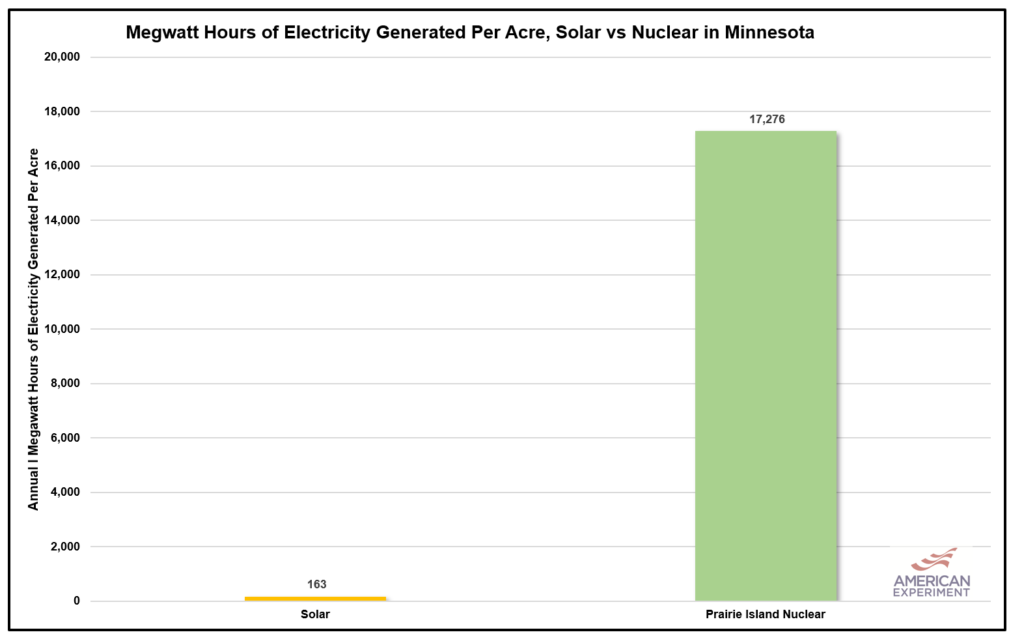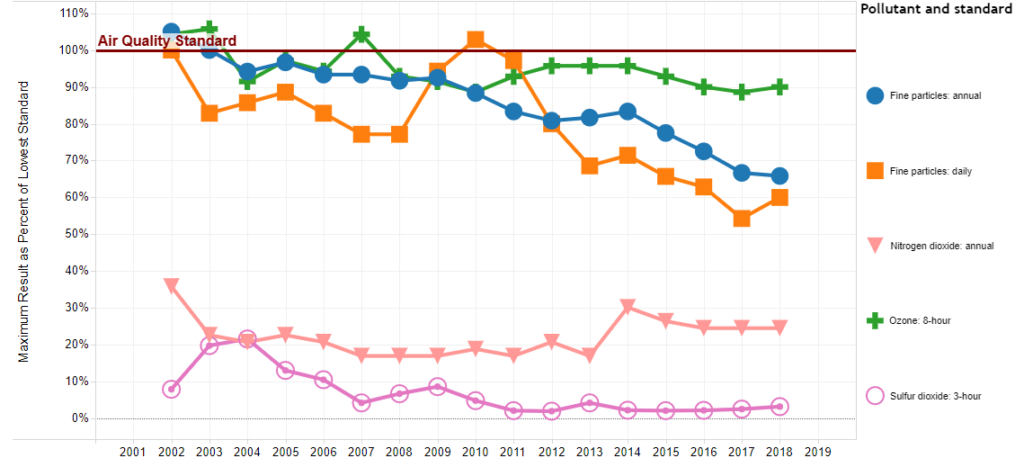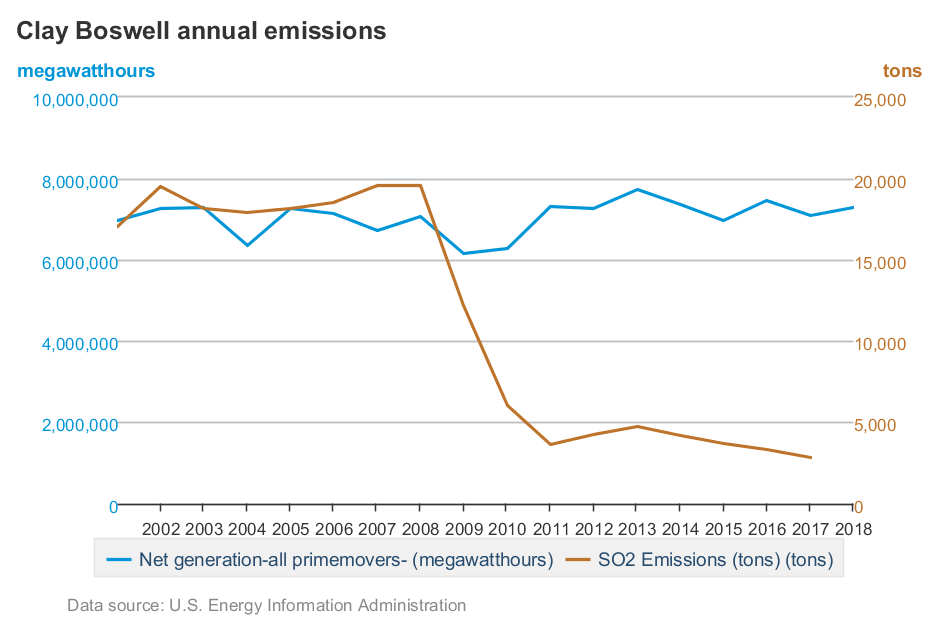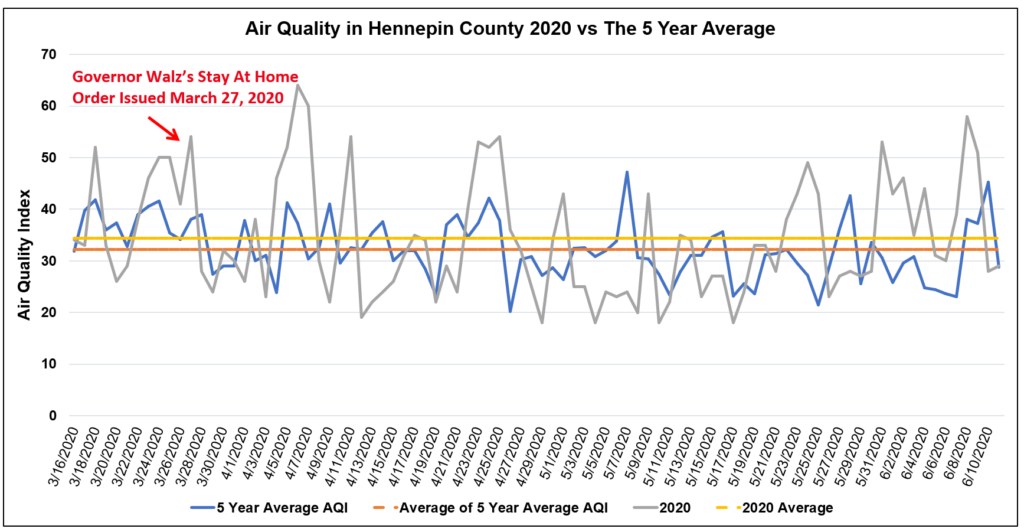Debunking the Minnesota “Conservative” Energy Forum’s “Cleaner and Cheaper” Talking Points: How Clean Are Renewables, Really?
Last week we discussed why the Minnesota “Conservative” Energy Forum’s (MNCEF) claim that wind and solar are “cleaner and cheaper” than traditional energy resources like coal, natural gas, and nuclear power is a fraudulent talking point from an economic perspective. Today, we’ll examine why wind and solar aren’t the environmentally consequence-free energy sources they’re often touted as, and discuss better ways to take care of Minnesota’s environment for future generations.
This article is the third in a series explaining how the Minnesota Conservative Energy Forum is intentionally misleading Minnesota conservatives on energy issues.
Everything Has An Impact on the Environment, Even Wind and Solar.
Many people seem to feel that wind and solar do not have impacts on the environment, but the facts simply don’t care about these feelings. In reality, every single thing humans do has an environmental impact, whether it be operating a coal plant, an iron mine, a wind turbine, or a solar panel. Even the tourism industry can facilitate the spread of invasive species.
When it comes to the negative environmental impacts of renewable energy, wind and solar are almost always given a free pass by liberals. For many people, Michael Moore’s documentary Planet of the Humans was the first time they had ever even considered the possibility that renewables might be bad for the environment. I’d encourage you to watch the entire film if you have time.
Because all activities have some environmental impact, it isn’t realistic to ask whether a given economic activity will have any negative environmental impact (if it were, we’d never do anything), but rather, we must ask “Can the negative environmental impacts be minimized while maximizing the economic benefits?”
Of course, any project must also make sense from a free market standpoint, but wind and solar fail this test because as we discussed last week, they are entirely dependent upon government support.
The Negative Environmental Impacts of Wind and Solar
We know that wind and solar don’t pass the free market test, but it is important for conservative Minnesotans to understand that there are also many ways in which wind and solar produce negative environmental outcomes.
First, wind turbines and solar panels require massive quantities of metals like copper, nickel, and cobalt that come from mining. While the United States and Canada have some of the strongest environmental protections in the world for mines, the fact that so-called environmental groups delay domestic mining projects for as long as possible means that mining operations are often located in developing countries with few, if any, protections for workers (many of them children) or the environment. As a result, the environmental damage caused by mining these metals is much higher than it should be.

Second, wind turbines and solar panels don’t last very long. In fact, the National Renewable Energy Laboratory (NREL) estimates that wind turbines only last 20 years and other research has found their production falls off steeply when the subsidies they receive expire. Solar panels last 25 to 40 years, but many warranties for solar panels are only for 25 years. Solar panels may also see their production fall by 20 percent during this time frame.

In contrast, nuclear plants can last for 80 years, and natural gas and coal plants have operated well beyond 60 years, and could be repaired to run longer. This means wind turbines and solar panels need to be built, torn down, and replaced multiple times during the ordinary lifetime of other power plants. While it is true that wind and solar don’t consume fuel, they are far from a permanent replacement for traditional energy sources.
When wind turbines are worn out, the steel towers and copper wiring are recycled, but their concrete foundations remain in the ground forever and the wind turbine blades are sent to landfills because they can’t be recycled. Taking wind turbines apart is also very expensive. According to Xcel Energy documents, it costs $532,000 to decommission a single wind turbine.

When solar panels are worn out, they are often shipped to developing countries in the Middle East and Africa to deal with. The International Renewable Energy Agency (IRENA) in 2016 estimated there was about 250,000 metric tonnes of solar panel waste in the world at the end of that year. IRENA projected that this amount could reach 78 million metric tonnes by 2050.
Third, wind and solar consume much more land than other energy sources but produce far less electricity. For example, solar panels in Minnesota produced only 18.6 percent of their potential output in 2018. This means on a yearly basis, the 1,000 megawatts of solar panels, installed on 10,000 acres of land, will only produce 163 megawatt hours per acre. In contrast, the Prairie Island nuclear plant, which sits on 520 acres, produced a whopping 8.9 million megawatt hours, or 17,276 megawatt hours per acre. This means nuclear power produced 105 times more electricity per acre than solar, as you can see in the graph below.
If the goal of environmentalists is to preserve more of the environment, wind and solar are doing the exact opposite because their inefficiency results in far more disturbances of wildlife habitat for less electricity.

Lastly, there is the problem of reliability. Last week, I wrote about how the fact that wind and solar are unreliable means that Minnesotans still need coal and natural gas plants on the grid to make sure the lights stay on at our homes, businesses, and hospitals, and how this increases the cost of electricity for everyone. It also means that the negative environmental impacts of wind and solar that were discussed in the last several paragraphs are occurring in addition to whatever impacts these reliable sources of electricity would have on the environment.
A Better Way For A Conservative Energy Future
Given the fact that there is no such things as a free environmental lunch, the next best thing is to look for ways to get the best environmental return on investment by prioritizing technologies that can make the biggest improvements to the environment for the least cost to consumers. This is exactly what Minnesota has done in the past, and it is why Minnesota’s air quality is already incredibly clean.
Cleaning Our Coal Plants
Over the last several decades, Minnesota has taken efficient steps to greatly reduce the amount of pollution coming from our coal plants. As a result, Minnesota’s air meets the most stringent air quality standards established by the U.S. Environmental Protection Agency, as you can see in the graph from the Minnesota Pollution Control Agency below.

This was achieved in part by making our coal plants cleaner using cost-effective pollution control technologies.
For example, the graph below shows emissions from the coal-burning Boswell Energy Center. This power plant generated the lowest cost electricity in the entire state of Minnesota in 2018, according to data from the Federal Energy Regulatory Commission (FERC). The Boswell plant was also incredibly clean, with emissions falling by about 80 percent since 2008 while the plant produced more electricity than it did that year.

The end result of these measures was impeccably clean air at a low cost. In fact, Minnesota’s air is so clean that backyard fires and other neighborhood sources now account for far more pollution than all of the state’s power plants and factories combined, according to the Minnesota Pollution Control Agency.

This amazing environmental progress was achieved while keeping our electricity prices low and our economy strong. However, because our air is already so clean, new regulations will damage Minnesota’s economy without much, if any, measurable environmental improvement.
The graph below shows the Air Quality Index in Hennepin County from March 16, 2020 through June 11, 2020 as measured by the U.S. Environmental Protection Agency. Interestingly, this graph shows the air quality was slightly worse during Governor Walz’s Coronavirus shutdown than the previous five year average, despite the fact that the Governor had unilaterally shut down much of our state’s economy.

The fact that the Walz shutdown destroyed more than 781,000 jobs in Minnesota but did not reduce pollution is testament to how clean our air already is, and it shows that even the most draconian measures cannot meaningfully improve upon the progress we have already made in ensuring a clean and healthy environment for future generations.
Conclusion
We have seen that renewables are certainly not cheaper than traditional power plants in Minnesota, and we’ve also seen that there are much more cost effective ways to reduce the amount of pollution in the air than spending billions of dollars on wind turbines, solar panels, and transmission lines, or shutting down most of Minnesota’s economy.
Unfortunately, rising amounts of wind and solar on Minnesota’s electric grid will cause electricity prices to keep increasing, putting energy intensive industries like farming, manufacturing, and mining at risk of moving to other states, or countries. Minnesota conservatives should fight to avoid this fate at all costs, because these industries often form the backbone of communities in Greater Minnesota, providing high-paying jobs to hard working people.
Conservatives should always be looking to optimize environmental quality and economic opportunity but it would be much better to advocate for making common sense improvements to our existing power plants and legalizing the construction of new nuclear power plants and hydroelectric plants rather than promoting expensive and unreliable sources of power.
Minnesota can have clean air and cheaper electricity, but not if we keep building more wind turbines and solar panels.